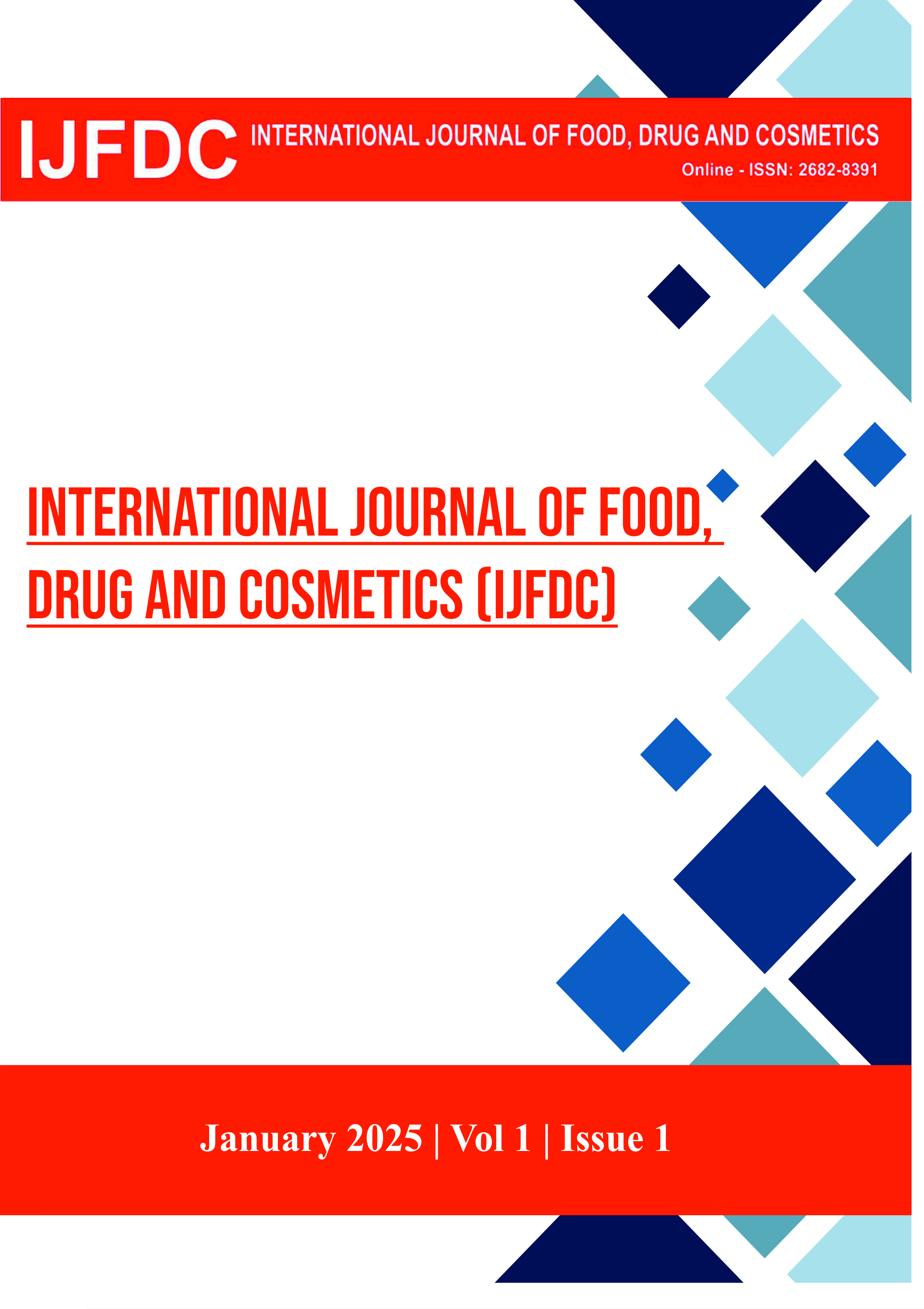EVALUATION FOR ANTI-INFLAMMATORY ACTIVITY OF 100% CALABASH FRUIT (CRESCENTIA CUJETE)EXTRACT ON ICR MICE
DOI:
https://doi.org/10.31674/ijfdc.2025.v1i01.005Abstract
This study evaluated the anti-inflammatory activity of 100% Calabash fruit (Crescentia cujete) extract on Institute for Cancer Research Mice. Crescentia Cujete is also known as Calabash and is a member of the Bignoniaceae family. Extract wasobtained by macerating the fruit pulp without seeds in 95% ethyl alcohol for 72 hours with slight agitation. The evaporation process was done through the use of a rotary evaporator to obtain the pure extract.
Calabash fruit extract was studied on egg-albumin induced paw edema (10mg/1000ml x BW) on ICR Mice. The Positive control, Diclofenac Sodium; and the extract was administered orally using a gavage to each of the ICR mice. Extract was administered to the Positive control group 30 minutes after inflammation. While the Negative control group was given water 30 minutes after inflammation. Paw measurements were taken every 30 minutes for 8 hours using the cotton thread method.
Results obtained from the experimental control (mean 3.46cm) showed there was a significant decrease (mean 2.11cm) in inflammation on the egg-albumin paw edema on ICR Mice over the 8 hour observation Period. Unlike the negative control group (mean 2.78cm) which did not decrease as significantly (mean 2.26cm). In conclusion, the calabash fruit (Cresentia cujete) showed significant anti-inflammatory properties in reducing inflammation on egg-albumin induced paw edema on ICR Mice.




